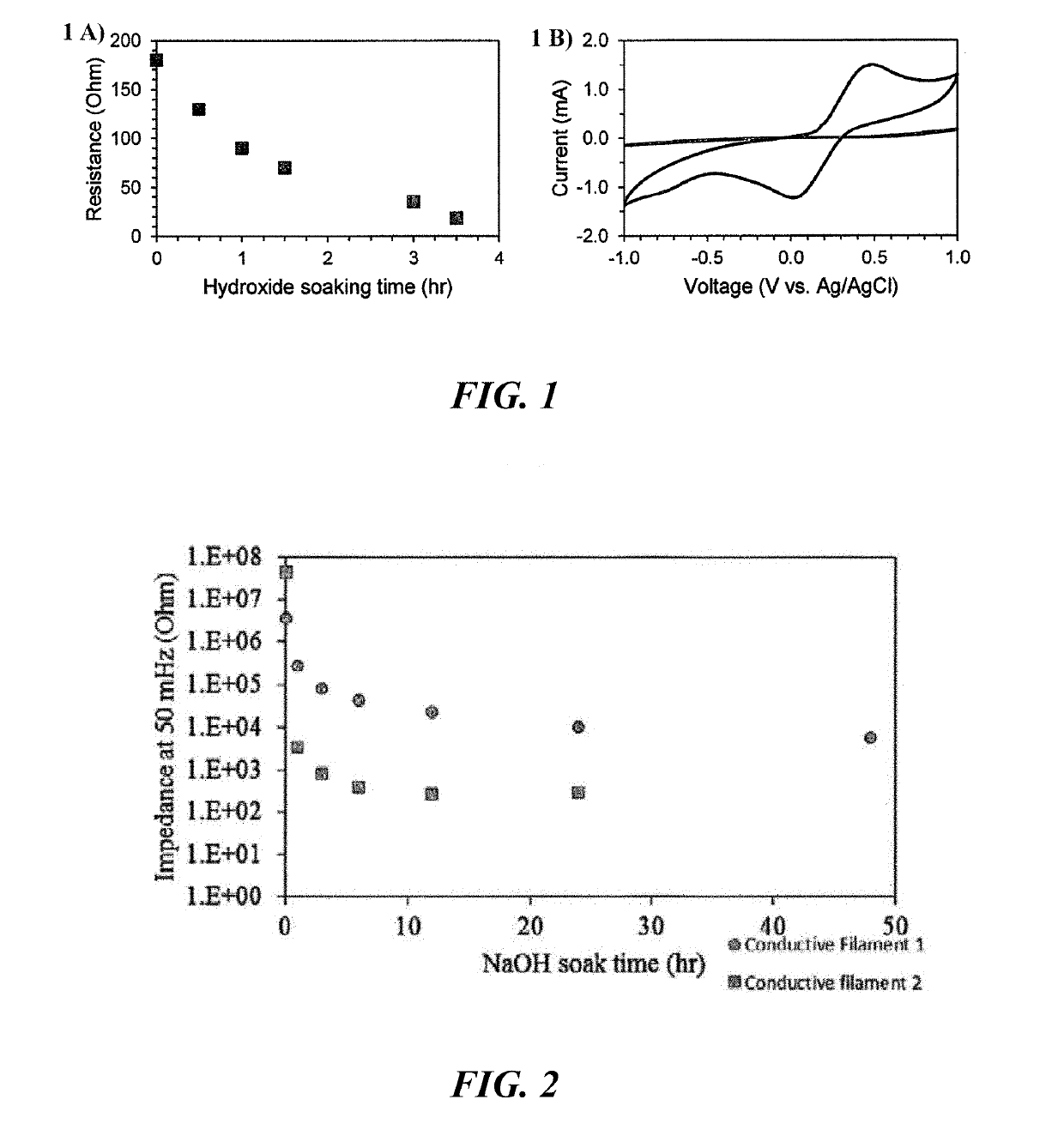Methods For Making And Enhancing Properties Of Polymer Composite Materials Used In Fused Filament Fabrication
a polymer composite material and fabrication method technology, applied in additive manufacturing, manufacturing tools, inks, etc., can solve the problems of reducing the resistance of printed materials, reducing the physical properties of printed materials, and difficult printing with commercial conductive filaments, so as to improve the physical properties of compositions, improve the conductivity of compositions, and enhance the physical properties of base materials
- Summary
- Abstract
- Description
- Claims
- Application Information
AI Technical Summary
Benefits of technology
Problems solved by technology
Method used
Image
Examples
Embodiment Construction
[0031]The embodiments herein and the various features and advantageous details thereof are explained more fully with reference to the non-limiting embodiments that are illustrated in the accompanying drawings and detailed in the following description. Descriptions of well-known components and processes and manufacturing techniques are omitted so as to not unnecessarily obscure the embodiments herein. The examples used herein are intended merely to facilitate an understanding of ways in which the invention herein may be practiced and to further enable those of skill in the art to practice the embodiments herein. Accordingly, the examples should not be construed as limiting the scope of the claimed invention.
[0032]The present disclosure describes a benign activation method for the FFF 3DEs based on the saponification of polylactic acid (PLA) insulating material using hydroxide. This method uses readily available materials and can even be applied using the electrolysis of water to prev...
PUM
| Property | Measurement | Unit |
|---|---|---|
| resistivity | aaaaa | aaaaa |
| resistivity | aaaaa | aaaaa |
| voltage | aaaaa | aaaaa |
Abstract
Description
Claims
Application Information
 Login to View More
Login to View More - R&D
- Intellectual Property
- Life Sciences
- Materials
- Tech Scout
- Unparalleled Data Quality
- Higher Quality Content
- 60% Fewer Hallucinations
Browse by: Latest US Patents, China's latest patents, Technical Efficacy Thesaurus, Application Domain, Technology Topic, Popular Technical Reports.
© 2025 PatSnap. All rights reserved.Legal|Privacy policy|Modern Slavery Act Transparency Statement|Sitemap|About US| Contact US: help@patsnap.com



